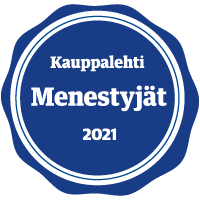316L Stainless Steel (1.4404)
316L Is one of our most popular metal materials. It is suitable for parts in many different industrial application such as medical, automotive, power plants, pulp and paper, chemical and many more.
Low carbon 316L alloy possesses enhanced resistance to corrosion from chloride and other acids. It has good toughness and can survive higher temperatures than carbon alloyed 316 version. With SLM technology we can make high quality prototypes, jigs, fasteners, tools and other end use products.
What is 316L Stainless Steel
316L is a standar used in North America which conforms to European 1.4404 classification. It signifies high quality low carbon corrosion resistant alloy.
The chemical resistance is the result to high chrome, nickel and molebdynium content in the alloy which gives it it’s corrosion resistance.
The L in 316L means low carbon. The difference in the ammount of carbon does not sound much but in 316L the maximum carbon content is 0.03% whereas 316 can have up to 0.08%. Even with such a low difference the alloys have different properties.
316L has better weldability and has better malleability performing better when bending, stretching and drawing. With SLM 3D-printing processes the low carbon also makes it much stable to process.
Austenitic crystal structure makes 316L non-magnetic and it does not harden when heated up.
Usage cases for 316L stainless steel
The mechanical properties of stainless steel make it a suitable material for a large variety of applications demanding strength, toughness and heat resistance. With additive manufacturing complex assemblies can simplified into one part.
Typical applications for 316L
- Marine-, Pulp & Paper-, Food processing equipment
- General Industrial equipment.
- Fuel nozzles, Heat exchangers, evaporators.
- Salt water and other piping systems exposed to corrosion.
- Food & drug equipment.
- Valves and pumps.
- chemical and petrochemical production equipment.
To lower production costs it is advisable to take advantage of the additive manufacturing process: design or update your stainless steel products according to 3D printing best practices and spend less on material costs.
3D Printing Technique: Selective Laser Melting (SLM)
Build chamber/max size: 280 mm x 280mm x 365 mm
Layer thickness: 30 um
Dimensional accuracy: ± 0,10 mm
Support material: Printed material
Read more:
> About Selective Laser Melting
> Design guidelines for metal printing
Mechanical properties

